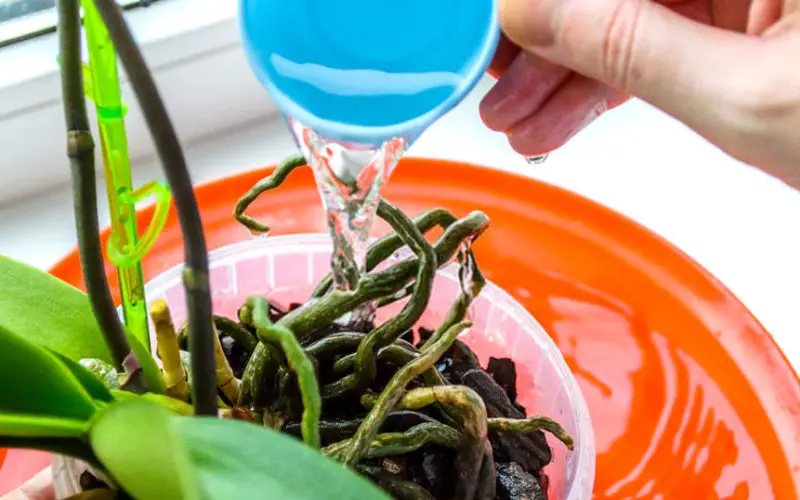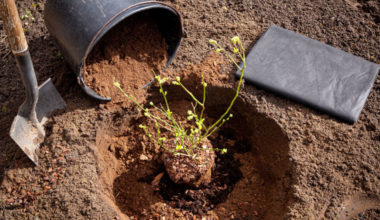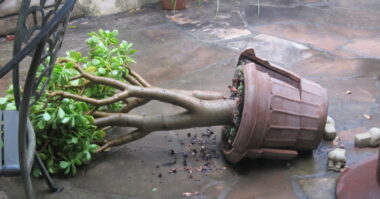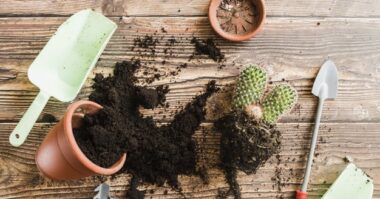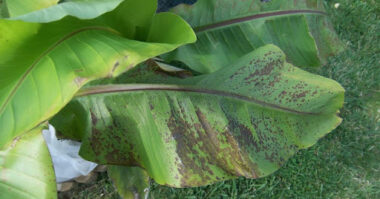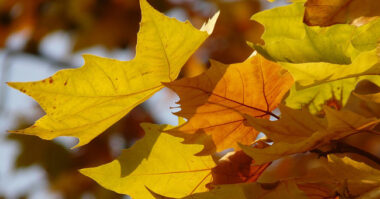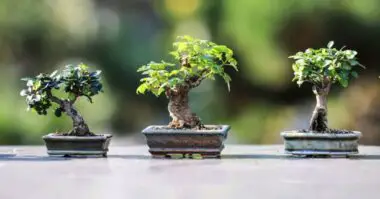Is your orchid about to die? Don’t panic, we give you all the tips you need to give it a new lease on life.
They are true works of art signed by nature, orchids have a power of fascination. Delicate both in shape and smell, these flowers require specific care to bloom again from one year to the next. Numerous parameters must be taken into account: light, temperature, fertilizer…
Contents
How do I know if my orchid is dying?
Growing orchids can be difficult and challenging for many growers, as they generally require more care than others. If you are still in the early stages of gardening, you may find it difficult to determine what a hibernating or dead orchid looks like. If you are growing an orchid in your garden and suspect that an orchid has died, here are some of the signs to watch for:
Assess the crown
In your orchids, if you see that the crown (the part of the orchid that connects the leaves to the base) is turning brown and the texture is soggy and mushy, it is probably rotten. Rots spread quickly to other parts of orchid plants, and they are usually not visible until its leaves turn yellow or black. On the other hand, if your orchid is just hibernating, its crown will appear green and plump.
Look for signs of root rot
One of the most common problems many orchid growers face is root rot. This often occurs in overwatered plants or when owners do not repot their orchids as often as necessary, as they will not be able to remove dead or diseased roots. Also, when orchids lack repotting, it will result in less oxygen penetration into the orchid’s roots.
Soft, limp roots can manifest root rot. Generally, once your orchid reaches this stage, there is little you can do to revive it. Most likely, as the roots begin to decay, your entire orchid will also begin to wilt and die.
Falling Yellow Leaves
While it is to be expected that orchids will shed their leaves during their dormant period, when growers begin to notice that their orchids’ leaves are turning yellow and falling off completely, it usually means that they are dead or dying. The best way to confirm is to check your plant for root rot. If the roots are rotten, it may be time to consider getting rid of your orchid.
How to save an orchid in each case
Saving a dry orchid
There are several methods to save a dried out orchid.
If it is the roots of the orchid that are dry – they quickly turn gray in Phalaenopsis orchids – it may be that your orchid is thirsty.
If this is the case, bathe the orchid in non-calcareous water for about 20 minutes and let it drain well. If the roots turn green again, it is indeed because the orchid needed to be watered.
However, if the roots start to dry out and the leaves and stem start to dry out as well, your orchid’s problem is more serious. The roots are probably rotting because of overwatering and can no longer play their role and feed the plant.
In this case, the flower must be de-potted immediately and the dry roots cut off to save it. The orchid will then have to be repotted – if it still has roots – in a clean pot with new substrate.
Be careful not to overwater it and place it in a bright environment with a temperature between 68 and 78 degrees Fahrenheit.
If the orchid has no healthy roots left, cut them off anyway and try to save it by applying the technique described below.
Saving a rootless orchid
When the orchid has had too much watering and its roots have rotted, there is no choice but to cut them off. This sometimes leads to rootless orchids, especially in Phalaenopsis.
If an orchid has no more roots, it dies. Therefore, a quick and efficient solution must be found to save the plant.
The best way to grow new roots is to put the orchid in complete hydro culture.
This consists of placing your orchids in pots without any substrate at the beginning, but above a water bottom so that new roots feeding on the humidity of this new climate will form.
To do this, pour non-calcareous water into a glass vase and place aquarium wadding on top of it so that it creates a barrier and concentrates the moisture inside the vase. The wadding will also soak up the moisture without getting soaked.
Then place your orchid on the wadding, fertilize it regularly and be patient.
New roots and leaves will then grow.
To save the orchid completely from this bad situation, wait until the roots are strong enough and then repot the plant in a pot or vase with a suitable substrate.
Rescuing an orchid that has lost its leaves
There are several reasons why orchid leaves may turn yellow and fall off. It can simply be the end of the flowering period, in which case it is sufficient to prune and fertilize the plant so that it starts again in the next season, but it can also be a malfunction.
In this second case, an adapted solution is needed to save the orchid.
Saving an orchid with yellow leaves
If the bottom leaves of your orchid are turning yellow and starting to fall off, it may be that your plant is old and naturally starting to die back. In this case, there is nothing you can do to save it.
However, yellow leaves on an orchid can also be a sign of an unsuitable environment for the plant or overwatering.
To save your orchid, it will be enough to adapt the culture parameters so that everything is in order:
- Temperature,
- Humidity,
- Absence of draughts,
- Absence of direct sunlight,
- Sufficient light,
- Suitable substrate,
- Fertilizer in precise dosage,
- Regular watering.
- It may also be necessary to cut the leaves, the roots and the dry stems.
- Be careful, for bamboo orchids not to cut the canes if they are not numerous.
Indeed, for Dendrobium, the canes are used as a reserve. If in doubt, it is better not to cut anything.
Saving an orchid that is infested with parasites
If all these parameters are in order and the yellow leaves persist, take a good look at them and see if they don’t also have black or white spots or sting marks.
It is possible that your orchid is being invaded by parasites that feed on its sap and lay eggs in the hollow of its leaves.
Most orchids that are infested by insects are those that are in the ground or are placed outside. Thus, it is often the Cymbidium orchids, for example, that are saved from an invasion.
To save an orchid attacked by insects, you must first clean it well with alcohol at 90°, beer or black soap. Then, immerse it in a fungicide solution and spray it daily with a suitable insecticide for several days.
Rescue a frozen orchid
It often happens that you have to save an orchid from freezing. Indeed, these are flowers that love the light. We tend to leave them outside and then forget about them. Sometimes burned by the sun, sometimes frozen, orchids see all the colors.
Saving a frozen orchid is not always possible, but it is worth a try.
Put it back in an environment that is adapted to its temperature, humidity, light, etc. Either you decide not to touch anything to see if the plant is really dead, or you can choose to cut off everything that seems to be completely dead like roots, leaves or even stems.
Afterwards, give it a good scrub and fertilize it. If it is still alive, within a few weeks you will see a new root, leaf or stem grow.
Reasons for the death of an orchid
An insect invasion could well kill an orchid, in which case it will be necessary to treat it by isolating it so that it does not contaminate other plants. If the flowers have all fallen at the same time, it is due to too much air or to a sudden change in temperature, it will be necessary to wait for the next flowering.
If the leaves show some traces of burns, then it will be necessary to move it away from the sun rays a little. If the leaves are soft, the substrate is dry and the roots become paler, then it will be necessary to water it from time to time.
If the roots become soft and blacken, you will have to space the watering and drain the pot well. If these few recommendations are well followed, then the death of the orchid can be avoided.
